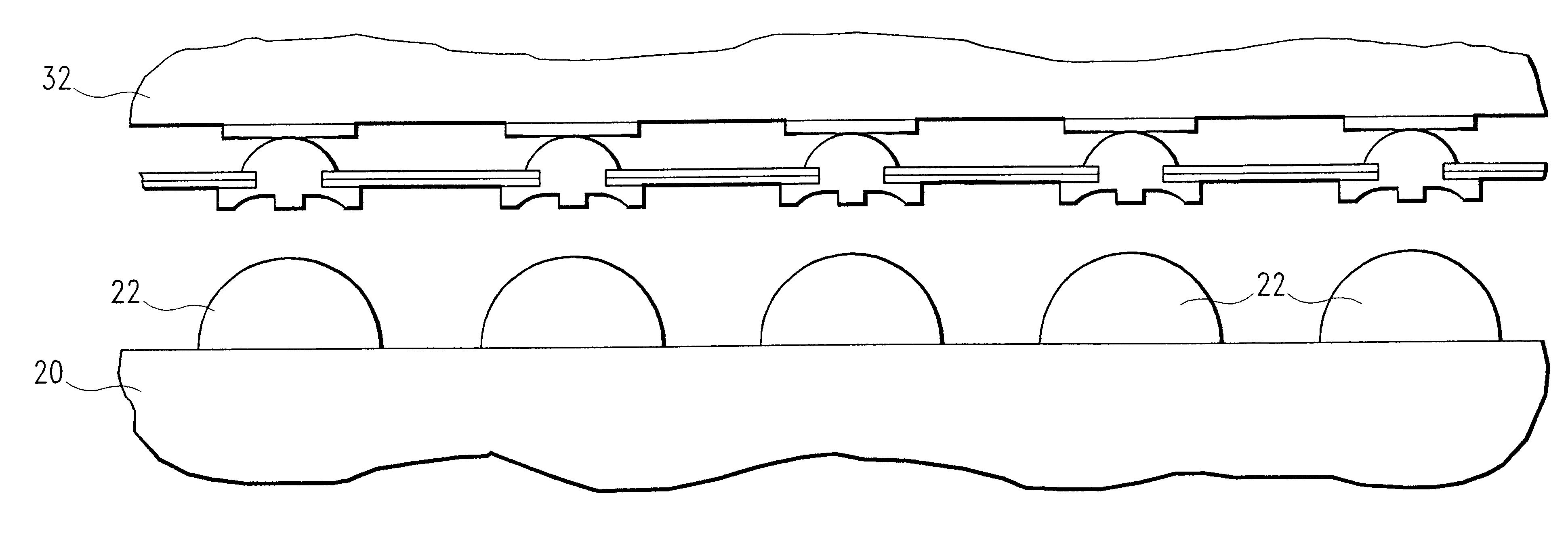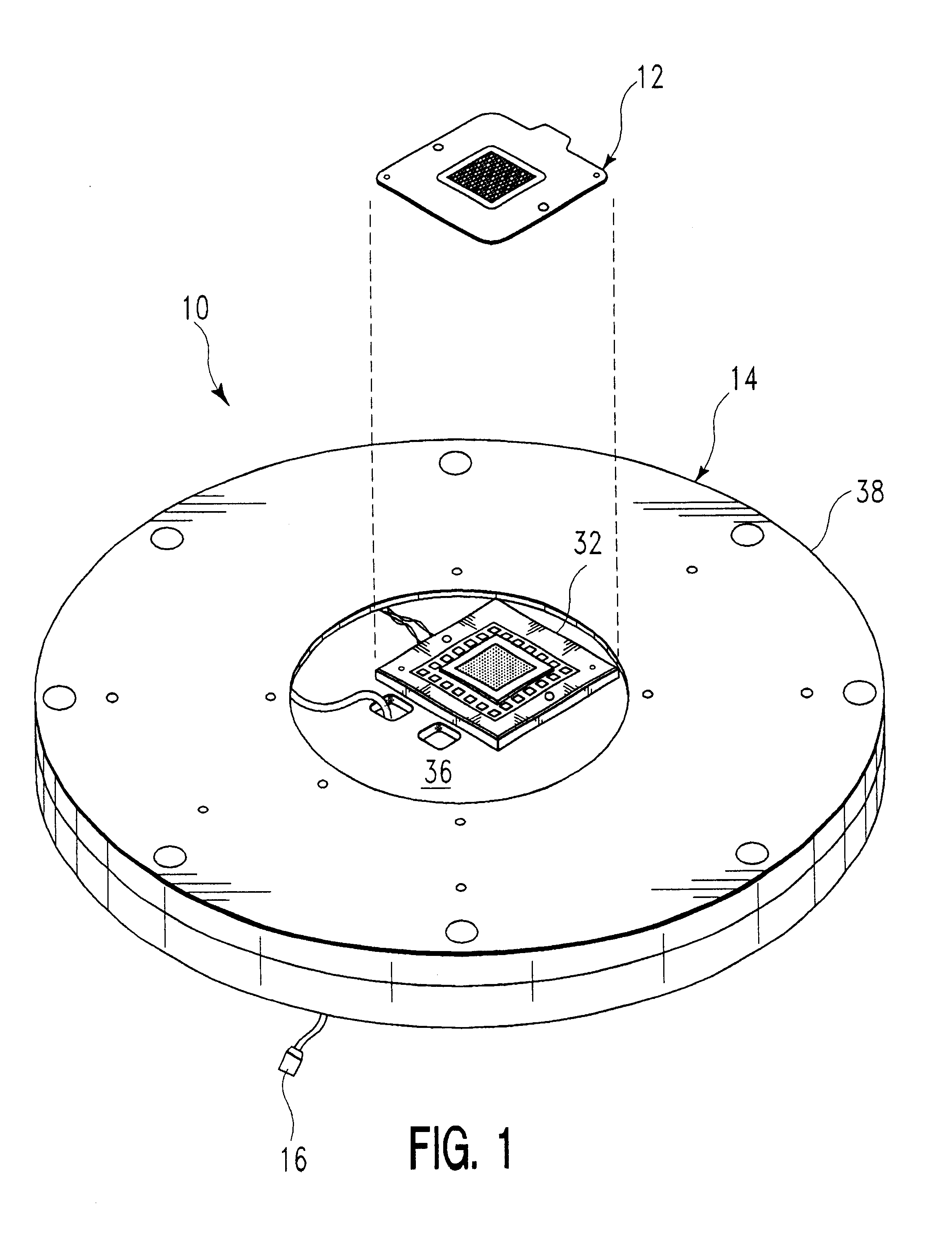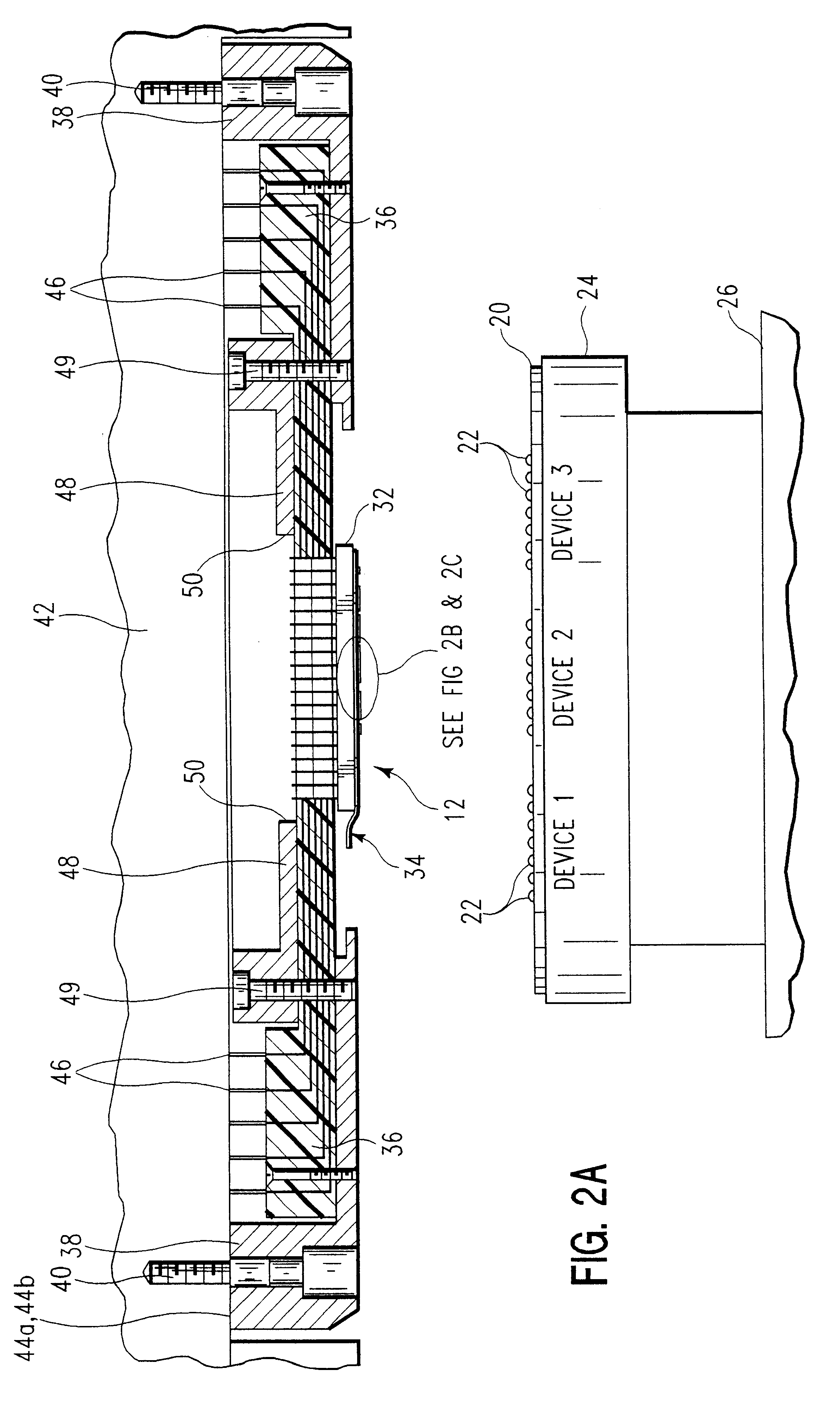Wafer probe interface arrangement with nonresilient probe elements and support structure
a non-resilient, probe element technology, applied in electrical testing, instruments, measurement devices, etc., can solve the problems of large upper and lower dies of such probe equipment, failure of the probing process, and challenge of cobra probes
- Summary
- Abstract
- Description
- Claims
- Application Information
AI Technical Summary
Benefits of technology
Problems solved by technology
Method used
Image
Examples
Embodiment Construction
The present invention provides reliable electrical contacts between rigid probes of a variable density built on a polyimide film and devices in an undiced wafer.
FIG. 1 illustrates a perspective view of a semiconductor wafer test system interface assembly 10 constructed pursuant to the present invention, shown inverted for purposes of clarity. FIG. 3 illustrates, in an inverted representation as in FIG. 1, an exploded perspective view of the components of the test assembly.
The test system interface assembly 10, as illustrated in FIG. 1, is designed to provide for reliable and repeatable electrical contacts. The assembly 10 comprises a typical rigid probe 12 and a space transformer 14. The rigid probe 12 is aligned into its appropriate position opposite conductive areas of a ceramic substrate 32, and is then maintained in proper contact through the use of a vacuum connection arrangement 16, 34. The test assembly nonresilient probe may be a type as disclosed in Byrnes et al., U.S. Pat....
PUM
 Login to View More
Login to View More Abstract
Description
Claims
Application Information
 Login to View More
Login to View More - R&D
- Intellectual Property
- Life Sciences
- Materials
- Tech Scout
- Unparalleled Data Quality
- Higher Quality Content
- 60% Fewer Hallucinations
Browse by: Latest US Patents, China's latest patents, Technical Efficacy Thesaurus, Application Domain, Technology Topic, Popular Technical Reports.
© 2025 PatSnap. All rights reserved.Legal|Privacy policy|Modern Slavery Act Transparency Statement|Sitemap|About US| Contact US: help@patsnap.com



